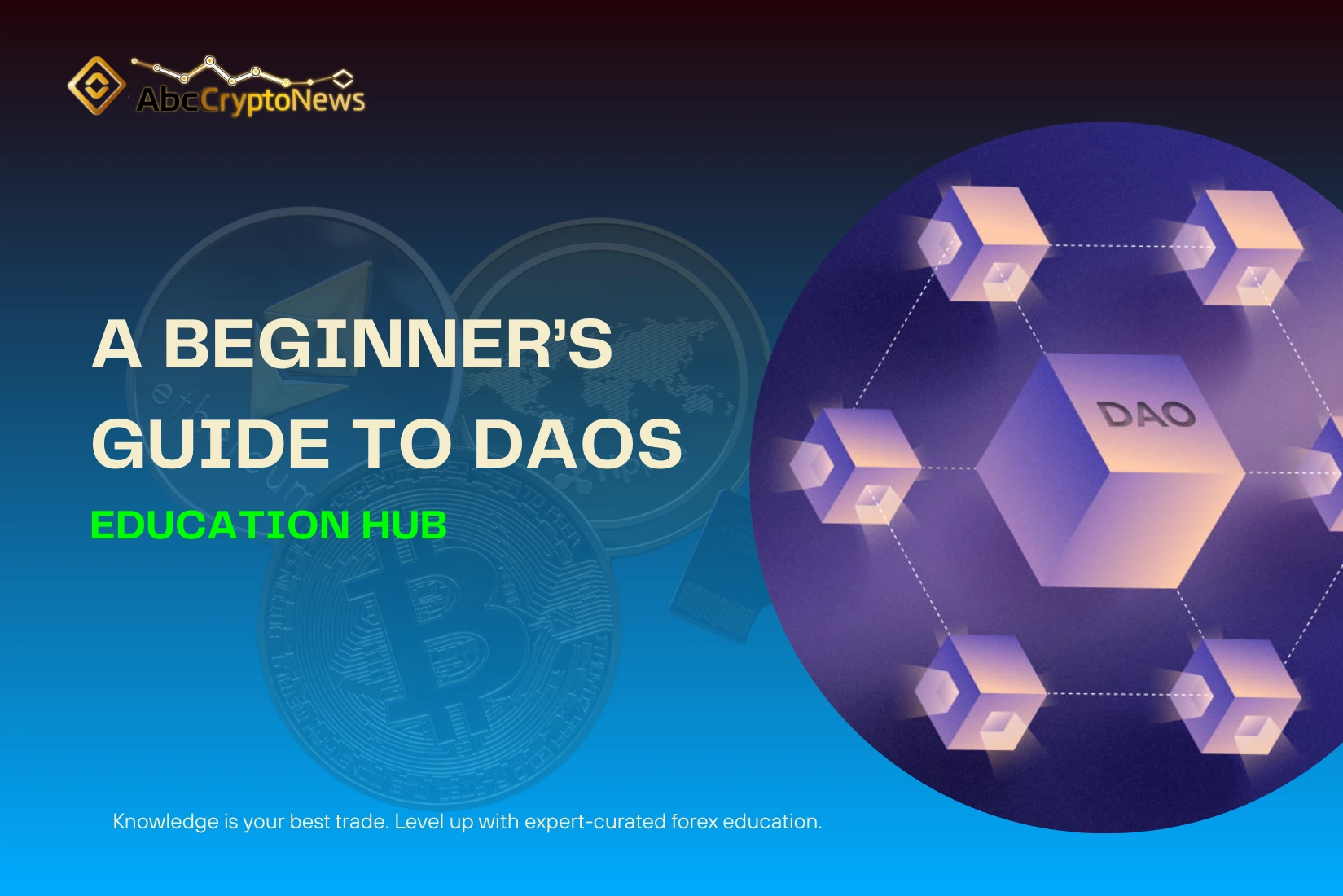DAOs for Beginners: What They Are and How to Join One
Summary
- 1. Opening with a Simple Question
- 2. DAOs for Beginners: A Short History of DAOs
- 3. DAOs for Beginners: The Core of a DAO
- 4. Why DAOs Attract Attention
- 5. Table: Leading DAOs and Their Focus (2025)
- 6. Joining a DAO: A Beginner’s Journey
- 7. Risks That Beginners Should Keep in Mind
- 8. Human Side: Inside a DAO Community
- 9. DAOs for Beginners: The Scale of Growth
- 10. DAOs for Beginners: Looking Toward the Future
- 11. Conclusion: DAOs for Beginners as a Doorway to Decentralized Collaboration
Opening with a Simple Question
DAOs for beginners raise a straightforward question: how can people make decisions together without a central leader? For centuries, organizations have relied on hierarchy — leaders at the top, rules flowing down. DAOs, or Decentralized Autonomous Organizations, flip this model. They distribute power through code and community rather than executives or boards.
The idea sounds futuristic, yet DAOs are already active across finance, culture, and social projects. To understand them, beginners need not only definitions but also a sense of how they function in practice.
DAOs for Beginners: A Short History of DAOs
The term DAO entered the public conversation in 2016 with the launch of “The DAO,” a blockchain-based venture capital fund. Built on Ethereum, it aimed to let investors pool money and vote on startups to support. The project raised $150 million but was hacked due to a smart contract vulnerability. While that specific DAO collapsed, the concept inspired years of development and refinement.
By 2025, DAOs have become more resilient. Many run treasuries worth millions, with formal governance structures, auditing processes, and active global communities. The early failure, in hindsight, was less a death sentence than a starting point.
DAOs for Beginners: The Core of a DAO
At its most basic, a DAO combines three elements:
- Smart contracts: Pre-written rules on a blockchain, ensuring actions follow agreed code.
- Governance tokens: Digital tokens granting voting rights, often proportional to holdings.
- Community treasury: A shared pool of funds, controlled collectively rather than by executives.
Together, these allow DAOs to function without centralized managers. Once the rules are deployed, changes require member approval through proposals and voting.
Why DAOs Attract Attention
For beginners, the appeal of DAOs lies in their differences from traditional institutions:
- Transparency – All transactions and votes are recorded on-chain, open for inspection.
- Global reach – Anyone with internet and tokens can join, regardless of location.
- Direct influence – Token holders can propose or decide on actions without needing to lobby leaders.
- Diversity of purpose – DAOs govern everything from financial protocols to art collectives.
The combination of openness, inclusivity, and experimentation makes DAOs a natural fit for the decentralized ethos of Web3.
Table: Leading DAOs and Their Focus (2025)
| DAO Name | Main Purpose | Blockchain | Distinguishing Feature |
|---|---|---|---|
| MakerDAO | Stablecoin governance | Ethereum | Oversees DAI, a decentralized dollar-pegged coin |
| Uniswap DAO | Exchange governance | Ethereum | Votes on upgrades and fee structures |
| ENS DAO | Naming infrastructure | Ethereum | Runs Ethereum Name Service (ENS) |
| BitDAO | Investment & treasury | Ethereum | Maintains one of DeFi’s largest treasuries |
| Gitcoin DAO | Public goods funding | Ethereum | Supports open-source projects through grants |
Joining a DAO: A Beginner’s Journey
Getting involved in a DAO doesn’t follow the process of joining a company or club. Instead, the entry steps typically include:
- Research the community
Beginners should start by reading the DAO’s documentation, forums, and past proposals. Transparency is expected. - Create a crypto wallet
Tools like MetaMask or WalletConnect allow interaction with DAOs. The wallet holds governance tokens and facilitates voting. - Acquire governance tokens
Depending on the DAO, tokens may be purchased on exchanges, distributed as rewards, or linked to NFT ownership. - Engage with discussions
Before voting, most members spend time on platforms like Discord or governance forums to understand debates. - Vote and contribute
Once comfortable, members can vote on proposals or draft their own.
This process lowers barriers: there is usually no formal job interview or contract. Contribution begins with interest and grows through participation.
Risks That Beginners Should Keep in Mind
Despite their potential, DAOs are not risk-free. Anyone considering participation should recognize several challenges:
- Smart contract vulnerabilities – Even well-audited code can contain flaws, leading to hacks or losses.
- Concentration of power – Wealthier members with more tokens can dominate votes, reducing fairness.
- Legal gray areas – Few countries have clear frameworks for DAOs, creating uncertainty around liability.
- Coordination issues – With global communities, decision-making can be slow or fragmented.
These risks underline why beginners should start small: observe, learn, and engage gradually rather than committing large funds immediately.
Human Side: Inside a DAO Community
Stepping into a DAO often feels like joining a large online forum, except the discussions influence real treasuries and protocols. Conversations may be chaotic, with developers, investors, and casual enthusiasts debating simultaneously. Yet many DAOs provide onboarding guides, mentorship programs, or voting tutorials to help newcomers.
Over time, active members often gain informal influence. Contribution may range from writing governance proposals to designing community events or technical improvements. Unlike traditional organizations, recognition often comes from visible participation rather than formal titles.
DAOs for Beginners: The Scale of Growth
According to DeepDAO, by late 2024 more than 13,000 DAOs were active, with combined treasuries surpassing $30 billion. This marks a significant expansion from just a few hundred DAOs in 2020. Categories include DeFi, social networks, gaming guilds, and public goods funding.
The scale reflects not only financial growth but also cultural shifts. Communities like Friends With Benefits (FWB) treat DAOs as digital social clubs, while Gitcoin DAO supports open-source software. This shows that DAOs are not tied to one industry — they serve as a flexible governance framework.
DAOs for Beginners: Looking Toward the Future
Analysts suggest DAOs could influence broader society beyond crypto. Experiments are underway in cooperative business models, charity management, and even city governance. While mainstream adoption faces legal and technical hurdles, the steady expansion suggests DAOs are here to stay.
Future improvements may include:
- More balanced voting systems (quadratic voting, reputation scores).
- Better legal recognition, providing clarity on liability and taxation.
- Integration with real-world assets, such as property or supply chains.
Conclusion: DAOs for Beginners as a Doorway to Decentralized Collaboration
DAOs for beginners offer an accessible way to explore how blockchain can reshape collective decision-making. They are not without risks, but they provide transparency, shared ownership, and opportunities for anyone with an internet connection to participate.
For newcomers, the journey starts with research, a wallet, and small steps into governance. As DAOs expand, they may become not just tools of finance but also laboratories for new ways of organizing human collaboration.
For those curious about Web3 communities, DAOs for beginners remain one of the clearest entry points into decentralized participation.




